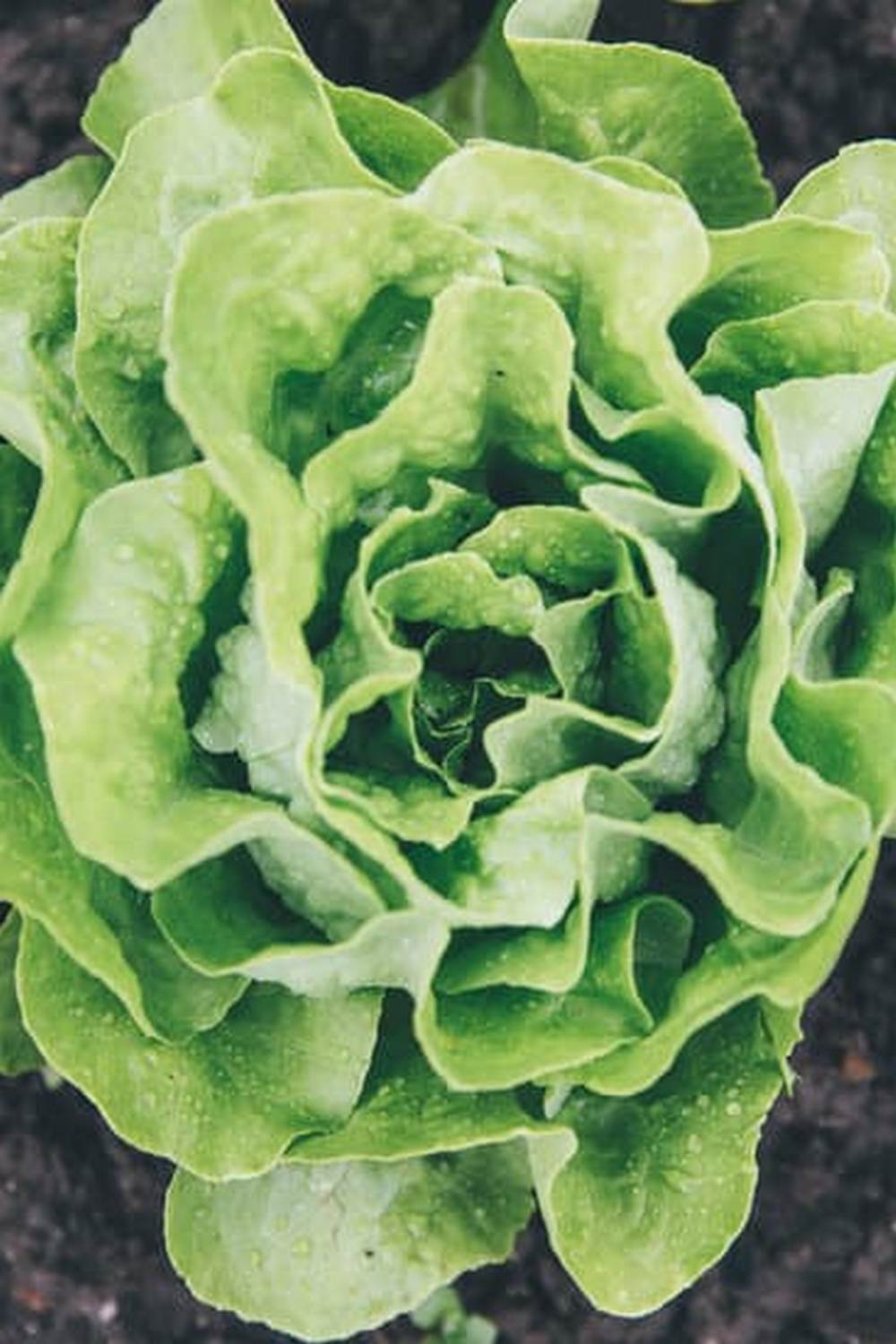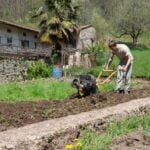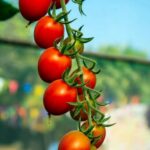Are you wondering about vegetable gardening how often to water plants? Vegetable gardening is a popular and rewarding hobby that allows individuals to grow their own fresh produce. Proper watering is crucial for the health and growth of vegetable plants, as it helps deliver essential nutrients and maintain soil moisture. In this article, we will explore the importance of proper watering in vegetable gardening and provide guidance on how often to water your plants.
One of the key benefits of vegetable gardening is the ability to enjoy fresh, homegrown produce that is free from harmful chemicals and pesticides. Additionally, gardening can be a relaxing and therapeutic activity that allows individuals to connect with nature. However, in order for vegetable plants to thrive, it is important to understand their specific watering needs and provide them with the appropriate amount of water.
Different vegetables have different watering requirements based on factors such as their size, root depth, and rate of evapotranspiration. It is essential for gardeners to consider these factors when determining how often to water their plants. By gaining a better understanding of the unique watering needs of each type of vegetable, gardeners can ensure that their plants receive the right amount of moisture for optimal growth.
Understanding the Watering Needs of Different Vegetables
When it comes to vegetable gardening, understanding the specific watering needs of different vegetables is crucial for ensuring their health and productivity. Different vegetables have varying requirements when it comes to water, and it’s important for gardeners to be aware of these differences in order to provide the appropriate care for each plant.
Factors such as the type of vegetable, soil type and composition, climate, and weather conditions all play a role in determining how often to water your plants. For example, leafy greens like lettuce and spinach generally require more frequent watering compared to root vegetables like carrots and beets. It’s also important to consider the stage of growth the plants are in, as young seedlings may have different watering needs compared to mature plants.
One way to determine if your plants need water is by checking the soil moisture level. Insert your finger into the soil near the base of the plant – if it feels dry an inch or so below the surface, it’s likely time to water.
You can also use a moisture meter to get a more accurate reading of the soil moisture level. Keep in mind that over-watering can be just as detrimental as under-watering, so it’s important to find that balance.
| Vegetable | Watering Frequency |
|---|---|
| Lettuce | Every 1-2 days depending on weather conditions |
| Tomatoes | 1-2 inches per week during growing season |
| Carrots | Once a week if there has been no rainfall |
Signs of Over-Watering and Under-Watering
When it comes to vegetable gardening, proper watering is crucial for the health and growth of your plants. Understanding how often to water your vegetable garden is essential for ensuring that your plants thrive and produce a bountiful harvest. One of the key aspects of proper watering is being able to identify the signs of over-watering and under-watering in your vegetable plants.
Over-watering can lead to a number of issues such as root rot, yellowing leaves, and mold or mildew growth. On the other hand, under-watering can cause wilting, stunted growth, and poor fruit or vegetable production. It’s important to be able to recognize these signs early on so that you can adjust your watering practices accordingly.
Signs of over-watering include waterlogged soil, yellow or drooping leaves, and a foul smell coming from the root area. On the other hand, under-watered plants may have dry, brown edges on their leaves, wilting during the hottest part of the day, or slow plant growth. By paying attention to these signs, you can make adjustments to your watering schedule as needed.
In addition to visual cues, it’s also important to feel the soil around your plants regularly. Overly wet soil feels soggy and damp, while soil that is too dry will be hard and cracked. By regularly checking the moisture level in your soil and observing the signs of over-watering and under-watering in your plants, you can ensure that they receive the proper amount of water for healthy growth.
| Signs of Over-Watering | Signs of Under-Watering |
|---|---|
| Waterlogged soil | Dry, brown edges on leaves |
| Yellow or drooping leaves | Wilting during hot weather |
| Foul smell near roots | Slow plant growth |
Factors Affecting How Often to Water
When it comes to vegetable gardening, understanding the factors that affect how often to water your plants is crucial for their overall health and growth. There are several key elements that can impact the watering needs of your vegetable garden.
Soil type and composition play a significant role in determining how often you should water your plants. Soil with high clay content tends to hold onto water for longer periods, while sandy soil drains quickly, requiring more frequent watering. Understanding the composition of your soil will help you adjust your watering schedule accordingly.
Another important factor to consider is the climate and weather conditions in your area. Hot and dry climates will necessitate more frequent watering, while cooler and moister climates may require less. It’s important to take into account the natural precipitation as well as the temperature and humidity levels when determining how often to water your vegetable plants.
Additionally, the type of vegetables being grown will also affect their watering needs. Leafy greens like lettuce and spinach require consistently moist soil, while root vegetables such as carrots and beets prefer a deeper, less frequent watering schedule.
To ensure that you are providing the proper amount of water for your vegetable garden, consider these key factors and adjust your watering frequency accordingly.
- Soil type
- Climate and weather conditions
- Type of vegetables being grown
Watering Techniques
Proper watering is essential for the success of any vegetable garden. Understanding the best techniques for watering your vegetable plants can make a significant difference in their growth and productivity. Here are some tips for effective watering techniques to ensure that your plants thrive.
Best Practices for Watering Vegetable Plants
When it comes to watering your vegetable garden, it’s important to water the soil, not the plants themselves. This means aiming your watering can or hose at the base of the plants rather than directly on their leaves. Watering the leaves can lead to moisture-related diseases, so it’s best to focus on keeping the soil consistently moist.
Another best practice is to water your vegetable garden in the morning. This allows the foliage and soil to dry out during the day, reducing the risk of fungal diseases. Additionally, morning watering ensures that your plants have access to water throughout the day when they need it most.
Deep Watering vs Shallow Watering
Different vegetables have different root systems, which impact how deeply they should be watered. For larger plants with deep root systems, such as tomatoes and peppers, deep watering is essential. This means applying a substantial amount of water less frequently to encourage deep root growth.
On the other hand, shallow-rooted vegetables like lettuce and radishes benefit from more frequent but lighter watering. Shallow watering helps keep their immediate root zone consistently moist without saturating the soil too deeply.
By understanding these best practices and techniques for watering your vegetable garden, you can ensure that your plants receive the proper amount of water for healthy growth and abundant harvests.
Creating a Watering Schedule
Developing a watering schedule for your vegetable garden is essential for ensuring that your plants receive the proper amount of moisture for healthy growth. The frequency of watering will depend on various factors, including the type of vegetables being grown, soil composition, and environmental conditions. By establishing a consistent watering routine, you can help prevent issues such as over-watering or under-watering that can negatively impact plant health.
To determine how often to water your vegetable plants, it’s important to consider the specific needs of each type of vegetable in your garden. Some vegetables, such as tomatoes and peppers, may require more frequent watering, especially during hot and dry periods. On the other hand, root vegetables like carrots and radishes may not need as much water and can tolerate drier soil conditions. Understanding the individual requirements of different vegetables will help you create an effective watering schedule.
In addition to considering the watering needs of your vegetables, factors such as soil type and climate will also play a role in determining how often you should water your plants. Sandy soils drain quickly and may require more frequent watering, while clay soils retain moisture longer and may need less frequent irrigation.
Likewise, hot and windy weather conditions can cause moisture to evaporate more rapidly, necessitating more frequent watering. By taking these factors into account, you can tailor a watering schedule that suits the unique needs of your garden.
Tools and Equipment for Effective Watering
When it comes to effective vegetable gardening and ensuring the proper growth of plants, having the right tools and equipment for watering is essential. Here are some of the key tools and equipment that can help ensure that your vegetable garden is properly watered:
- Irrigation systems: Installing a drip irrigation system or soaker hoses can help deliver water directly to the roots of your plants, reducing waste from evaporation and ensuring that each plant receives the right amount of water.
- Watering cans and hoses: For smaller gardens or individual plant care, watering cans and hoses provide a convenient way to manually water your vegetable plants. They allow for more targeted watering, especially in areas where an irrigation system may not reach.
- Mulching for water retention: Mulch helps to retain moisture in the soil by reducing evaporation. It also helps regulate soil temperature and suppresses weed growth, making it an important tool for maintaining proper soil moisture levels in your garden.
By utilizing these tools and equipment, you can more effectively manage the watering needs of your vegetable garden. Additionally, using these resources can help conserve water while ensuring that your plants receive the right amount of hydration.
It’s important to consider factors such as the size of your garden, the types of vegetables being grown, and environmental conditions when choosing the right tools and equipment for watering. By investing in these resources, you’ll be better equipped to maintain a healthy and thriving vegetable garden.
Tips for Maintaining Proper Soil Moisture
Maintaining proper soil moisture is essential for the health and growth of vegetable plants in your garden. By ensuring that your plants have the right amount of water, you can promote strong root development and encourage lush foliage and bountiful harvests. Here are some tips to help you maintain the ideal soil moisture levels for your vegetable garden.
Using Moisture Meters to Monitor Soil Moisture Levels
One effective way to determine if your plants are getting enough water is by using a moisture meter. These handy tools can provide accurate readings of the moisture content in the soil, allowing you to adjust your watering schedule as needed. By regularly monitoring the soil moisture levels, you can prevent both over-watering and under-watering, promoting optimal growing conditions for your vegetables.
Strategies for Conserving Water in the Garden
In addition to ensuring that your plants receive adequate moisture, it’s also important to practice water conservation in your garden. One way to do this is by adding a layer of mulch around your vegetable plants. Mulch helps retain soil moisture by reducing evaporation and protecting the soil from drying out quickly. Additionally, consider collecting rainwater in barrels or using drip irrigation systems to minimize water usage while effectively hydrating your crops.
Adjusting Watering Practices Based on Plant Growth
As your vegetable plants grow and mature, their watering needs may change. Young seedlings and newly transplanted crops often require more frequent watering compared to established plants. Observing how quickly the soil dries out between watering sessions can give you an indication of when it’s time to adjust your watering frequency. Adapting your watering practices based on the stage of growth for each type of vegetable can ensure that they receive the appropriate amount of water for healthy development.
By implementing these tips for maintaining proper soil moisture, you can support vibrant growth in your vegetable garden while being mindful of water conservation efforts. Experiment with different techniques and monitor the results to find the best approach for keeping your plants well-hydrated throughout their growing season.
Conclusion and Recap
In conclusion, understanding the watering needs of different vegetables is essential for successful vegetable gardening. Proper watering is crucial for the overall health and growth of plants, and it is important to consider factors such as soil type, climate, and the type of vegetables being grown when determining how often to water.
Over-watering and under-watering can have detrimental effects on plant health, so it is important to be able to identify the signs of each and adjust watering practices accordingly.
Developing a watering schedule based on the specific needs of your garden is key to maintaining proper soil moisture. This schedule may need to be adjusted based on environmental factors, so it’s important to stay attentive to the needs of your plants. Utilizing tools such as irrigation systems, moisture meters, and mulching can also help ensure that plants receive the appropriate amount of water.
In wrapping up, applying best practices for watering vegetable plants will contribute to a thriving garden. By taking into account the different factors that affect how often to water and using effective watering techniques, gardeners can maintain healthy soil moisture levels and promote robust plant growth. Ultimately, by staying informed about proper watering practices and implementing them in your own garden, you can enjoy a productive and flourishing vegetable garden.
Frequently Asked Questions
Should I Water My Vegetable Garden Every Day?
Watering your vegetable garden every day may not be necessary and could even be harmful to your plants. Overwatering can lead to root rot and other issues. It’s best to check the soil moisture before watering and adjust based on the specific needs of your plants.
How Often Do You Water a Raised Vegetable Garden?
The frequency of watering a raised vegetable garden will depend on various factors such as the type of soil, weather conditions, and the specific needs of the plants being grown. Generally, raised beds drain well, so they may require more frequent watering, especially during hot and dry periods.
Which Vegetables Need Most Frequent Watering?
Some vegetables that typically need more frequent watering include tomatoes, peppers, cucumbers, and squash. These plants have high water requirements to support their growth and fruit production. It’s important to monitor the soil moisture for these vegetables to ensure they are getting enough water without being over-watered.

If you’re looking to get into vegetable gardening, or are just looking for some tips on how to make your current garden better, then you’ve come to the right place! My name is Ethel and I have been gardening for years. In this blog, I’m going to share with you some of my best tips on how to create a successful vegetable garden.





